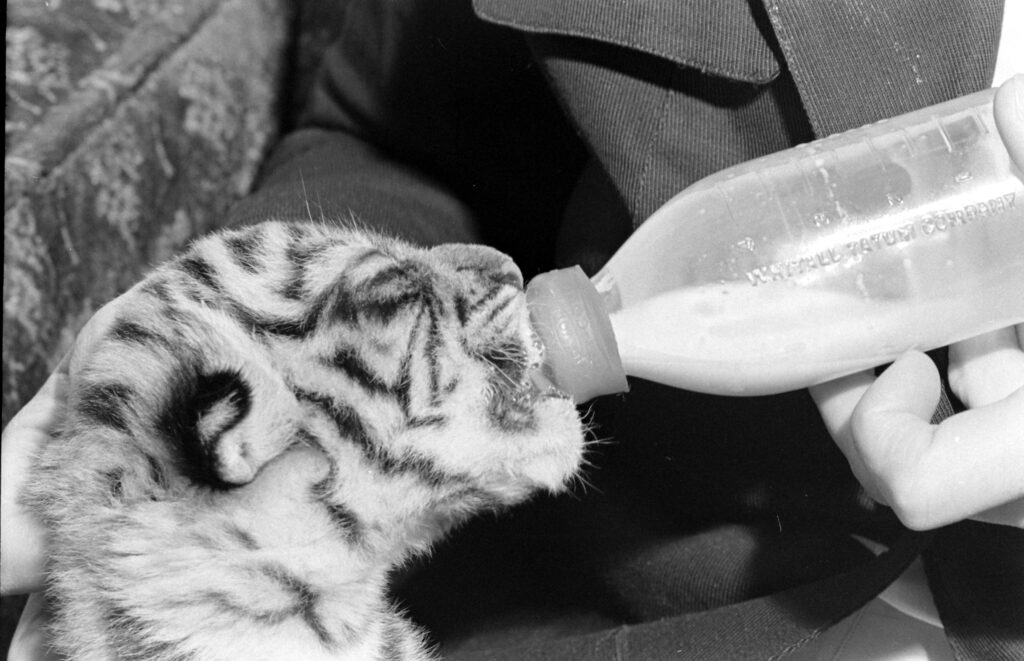Written By: Courtney Mifsud Intreglia
The following is adapted from LIFE’s new special issue on bears, available at newsstands and online:
Globally, bear populations are plummeting, with several species designated as endangered or vulnerable to extinction. But in many parts of North America, people are seeing more bears than ever. Since the 1970s, American bears in the lower 48 states have been expanding their territories, and enthusiasts need not travel into dense forests to spot a black bear or grizzly. Many can just look into their backyards. In the early ’70s, there were fewer than 100 black bears in New Jersey; today there are about 3,000 and they have been found in every county in the Garden State.
Over the past several decades, Americans have been cutting down more forests and developing commercial properties on lands that have long belonged to bears. With less space to roam, bears are becoming our new next-door neighbors, taking dips in swimming pools, lounging in hammocks, and rifling through garden sheds. Their hijinks, often caught on camera, attract millions of views on social media and portray bears as approachable and playful. But they are still predators, whose tolerance of humans has its limits. “The victim wasn’t off walking in the woods,” Charlie Rose reported in a 2014 CBS News program about a woman in Florida mauled by a bear. “She was attacked in her own suburban yard.” She survived, with 10 stitches and 30 staples to the head.
Since 1960, Florida’s human population has increased from 5 million to more than 22 million. To accommodate this surge, 7 million acres of forest and wetlands have been destroyed for new homes. So it might have been the woman’s backyard, but to the bear, it was also his.
If you find yourself in bear country, which today could be deep in Yosemite or just off New Jersey’s Garden State Parkway, there’s plenty of advice to avoid conflicts. If you encounter a bear, dispensing a canister of bear spray at the animal is more effective than any air horn or sound. While you’re urged to carry it in certain national parks, the product could be dangerous if not used according to its directions. In 2022, the Oklahoma Department of Wildlife Conservation tweeted: “Listen, bear spray DOES NOT work like bug spray. We would like to not have to say that again.”
Most bears will avoid humans if they hear them coming, but if a bear has noticed you, the U.S. National Park Service provides some general tips: Stand still and identify yourself as a human by talking calmly and slowly waving your arms, so the bear doesn’t mistake you for a prey animal. “It may come closer or stand on its hind legs to get a better look or smell,” notes the park service’s website. “A standing bear is usually curious, not threatening.”
Hike and travel in groups, as a collection of people are usually noisier—and smellier—than a lone person. A bear is more likely to notice your group and stay away. And remember that bears get more confident and linger when human food is involved. Keep your fare away and hidden; otherwise it could encourage a bear. If the bear is stationary, move away slowly and sideways. This movement allows you to keep an eye on the bear while avoiding tripping. Plus, moving sideways is non-threatening to bears.
Ultimately, stay calm and remember that most bears don’t want to attack you—they just want to be left alone. A bear woofing, yawning, growling, or snapping their jaws may just be bluffing their way out of a potential encounter. Continue to talk to the bear in low tones, keeping it calm until it leaves. Wild animals are dangerous and can be enjoyed from a distance, and hopefully that distance will widen after decades of encroachment on each other’s turf. And those who live on the periphery of their habitats know that the beauty of bears is worth protecting.
Here is a selection of images from LIFE’s new special issue on bears.

Alatom/Getty Images

Teddy Roosevelt’s act of kindness toward a bear during a 1902 hunt was the seed what would become known as the “teddy bear.”
Getty Images

Brown bears are the most widely distributed bear species in the world, and are found in northern North America, Europe and Asia.
Mari Perry/500px/Getty Images

Brown bear cubs, after being protected by their mother early in life, often briefly stay with their littermates before going on to lead independent lives.
Getty Images

When salmon migrate upriver, bears gather for a hearty meal.
© Gerald and Buff Corsi / Focus on Nature/Getty Images/iStockphoto

For polar bears, climate change is threatening their way of life.
© PAUL SOUDERS | WORLDFOTO/Getty Images

The koalas of Australia look like bears but are in fact marsupials.
B.S.P.I./Corbis Documentary/Getty Images

Bears’ teeth are similar to humans, with broad, flat molars that can be used to grind food.
Irena Anna Sowinska/Getty Images
















